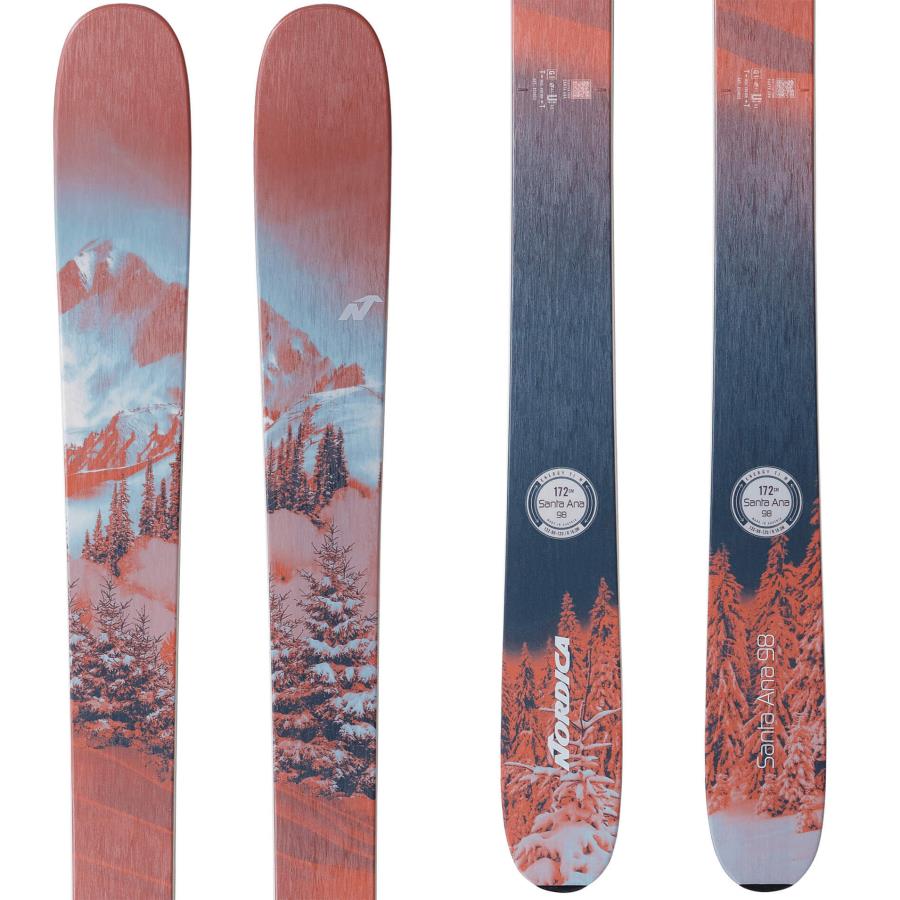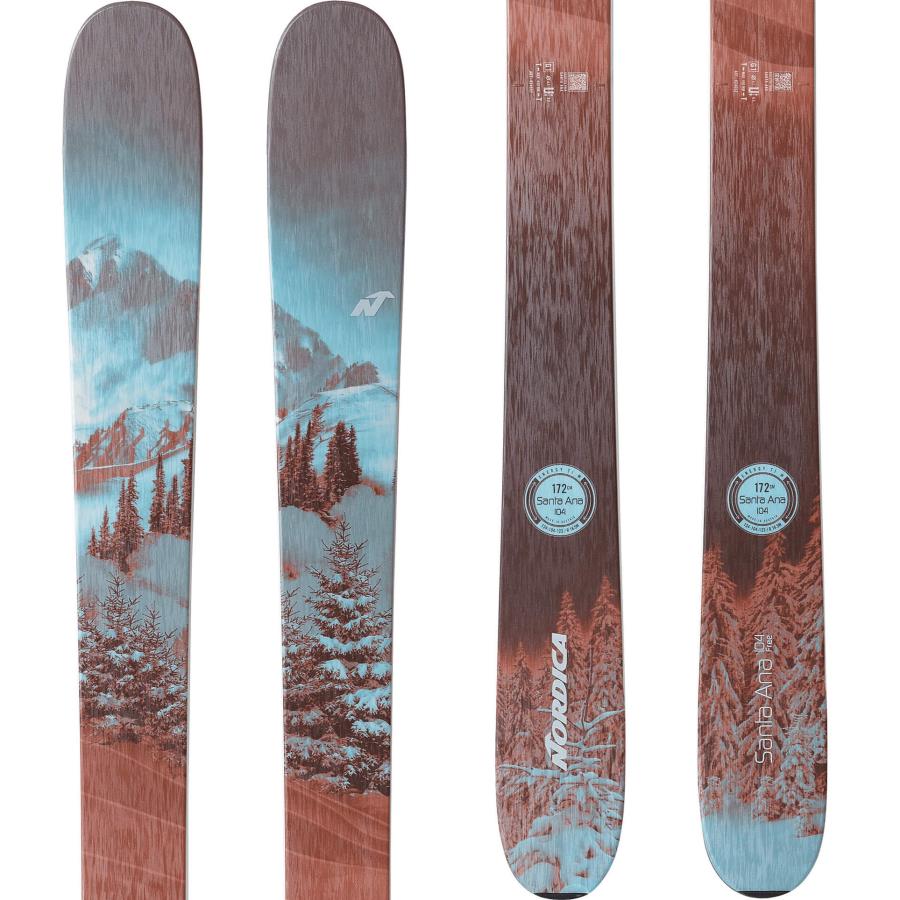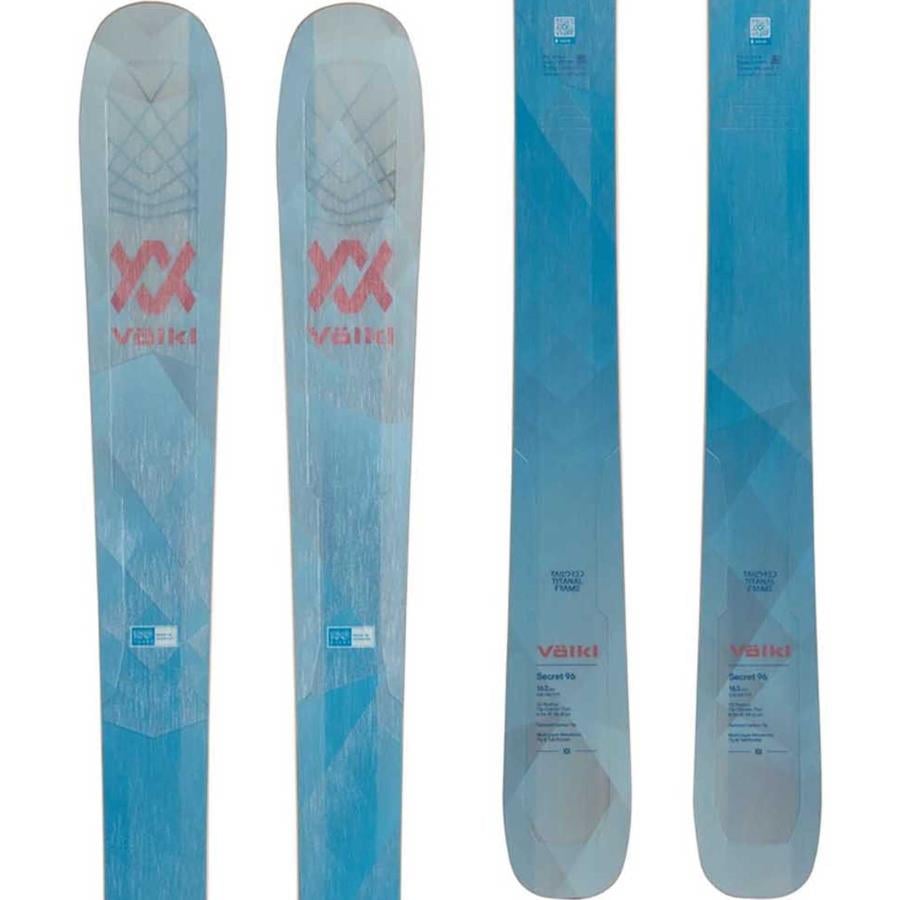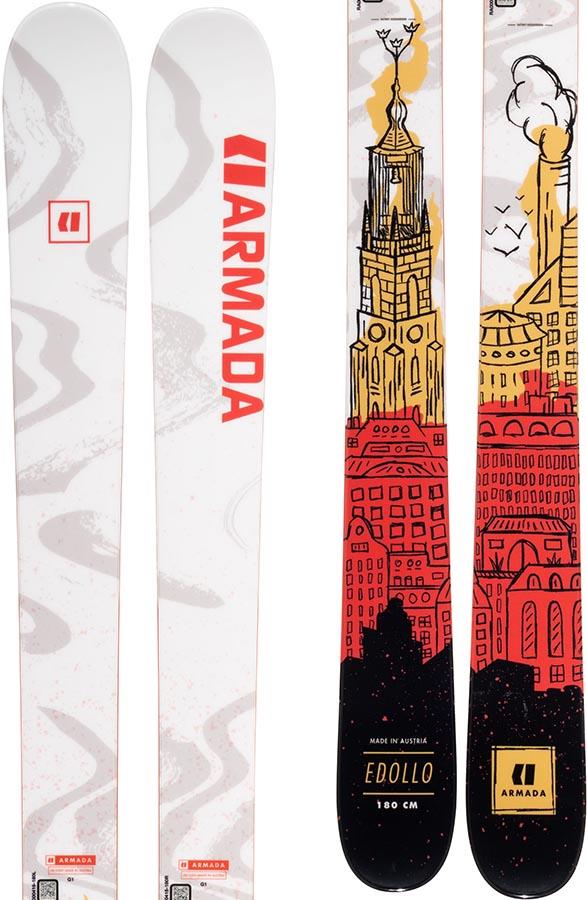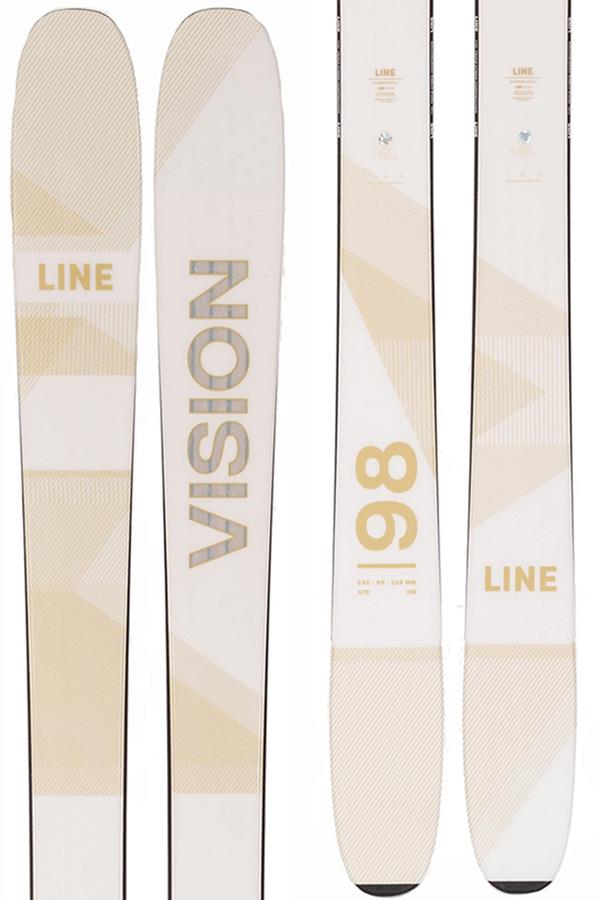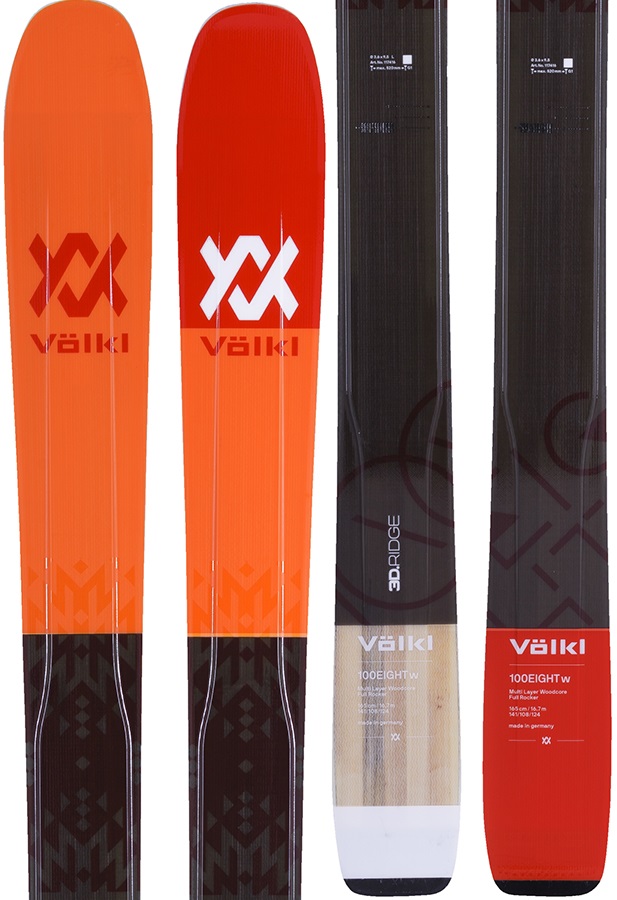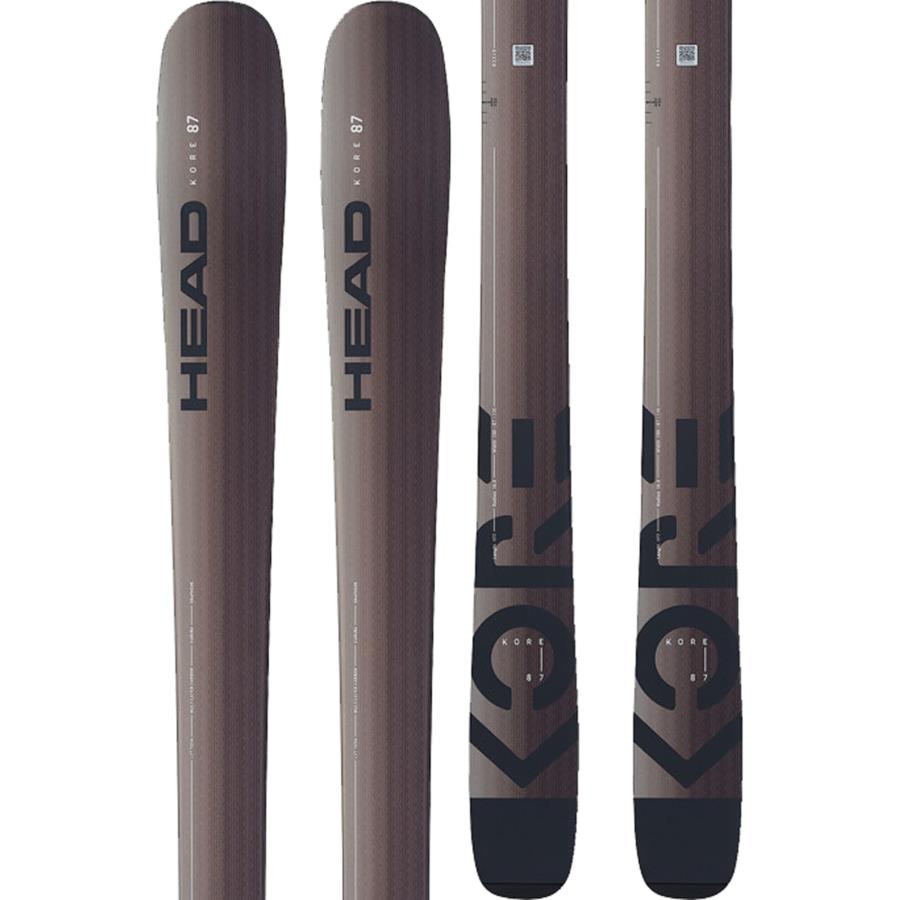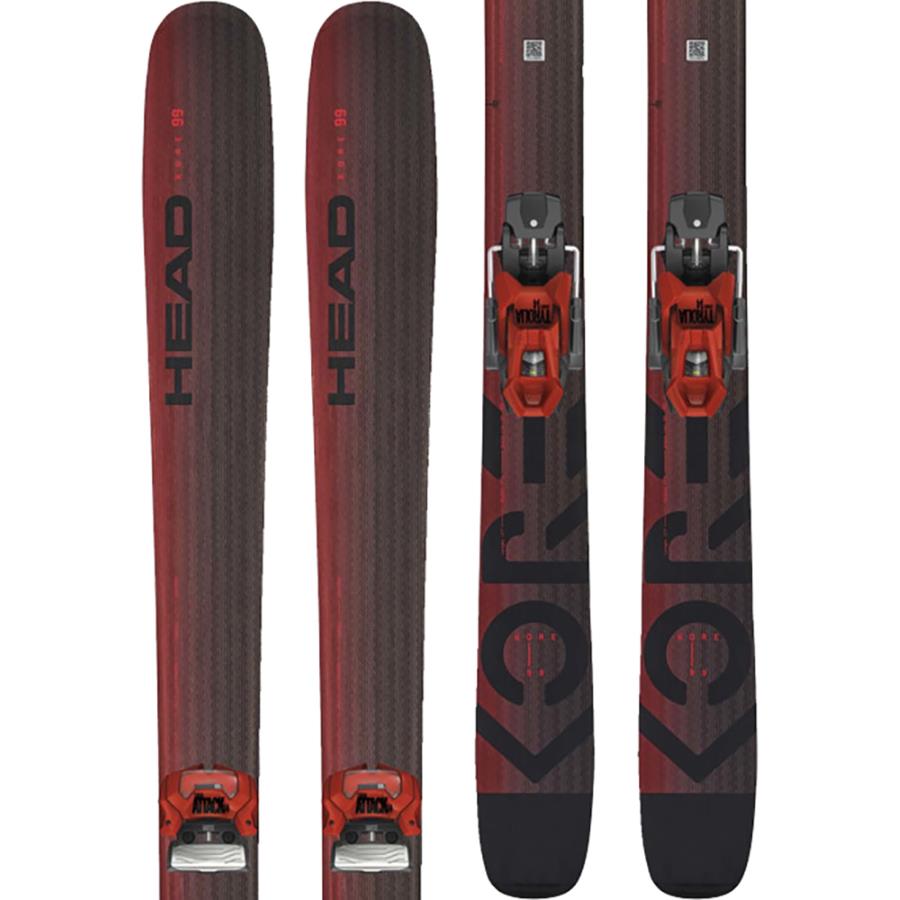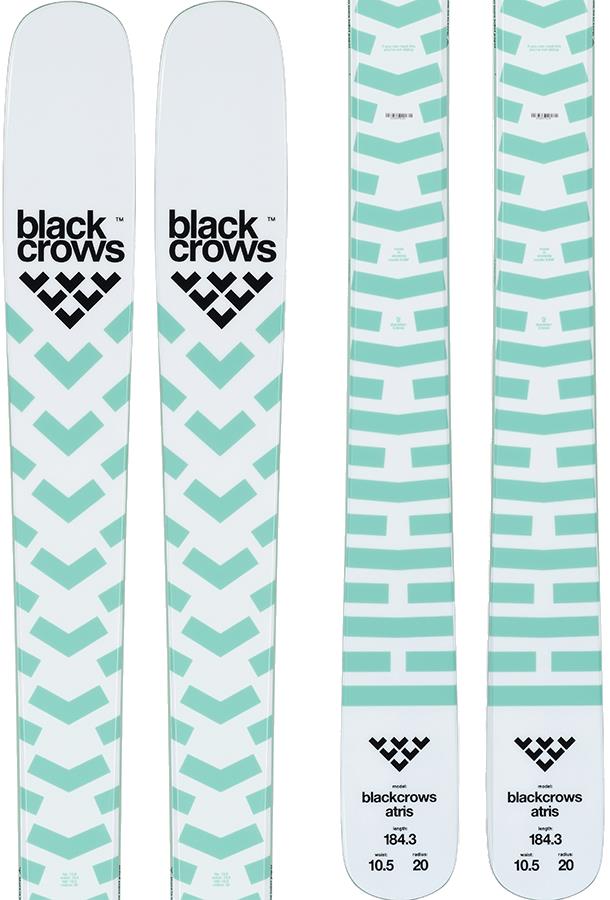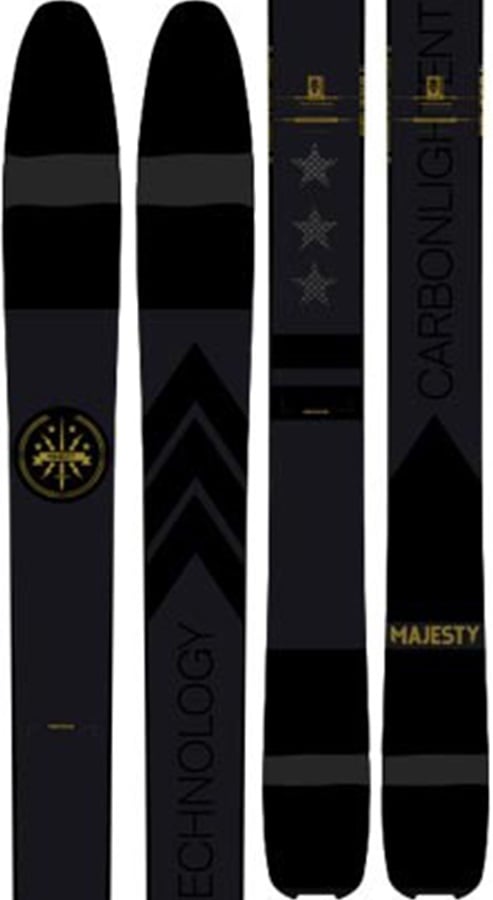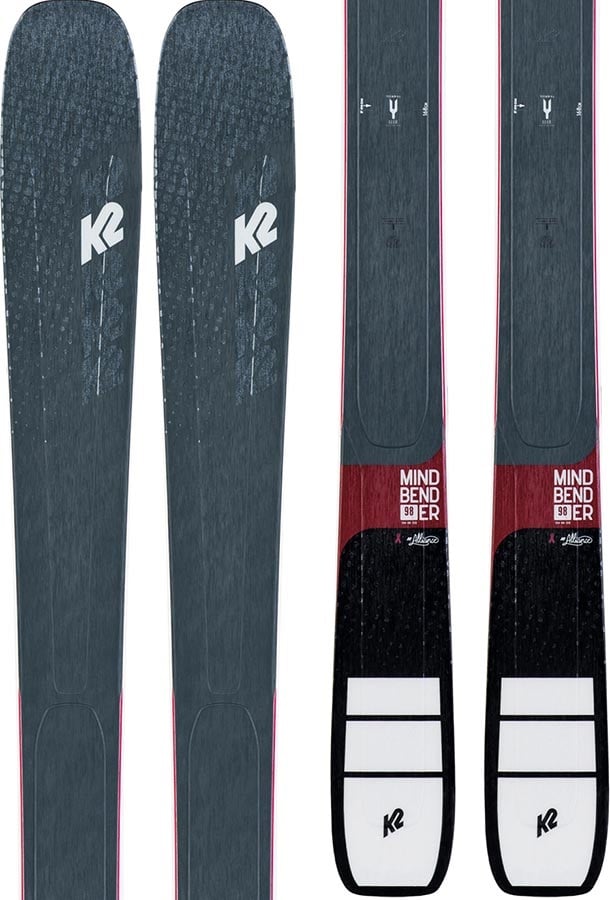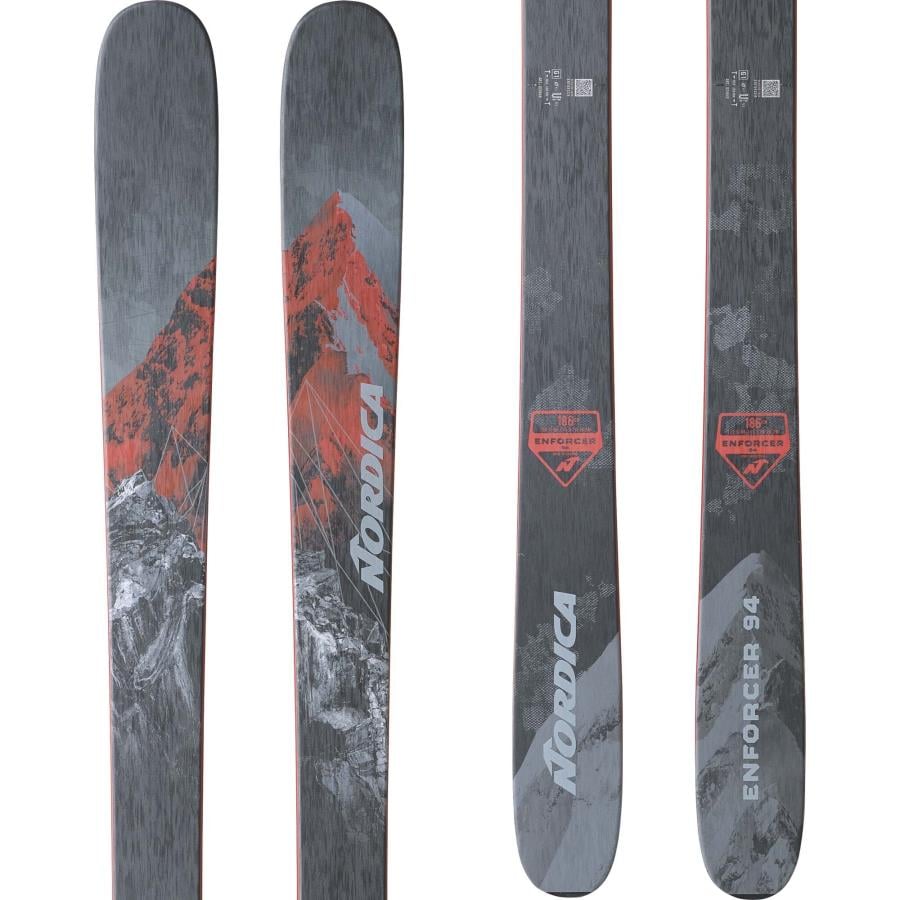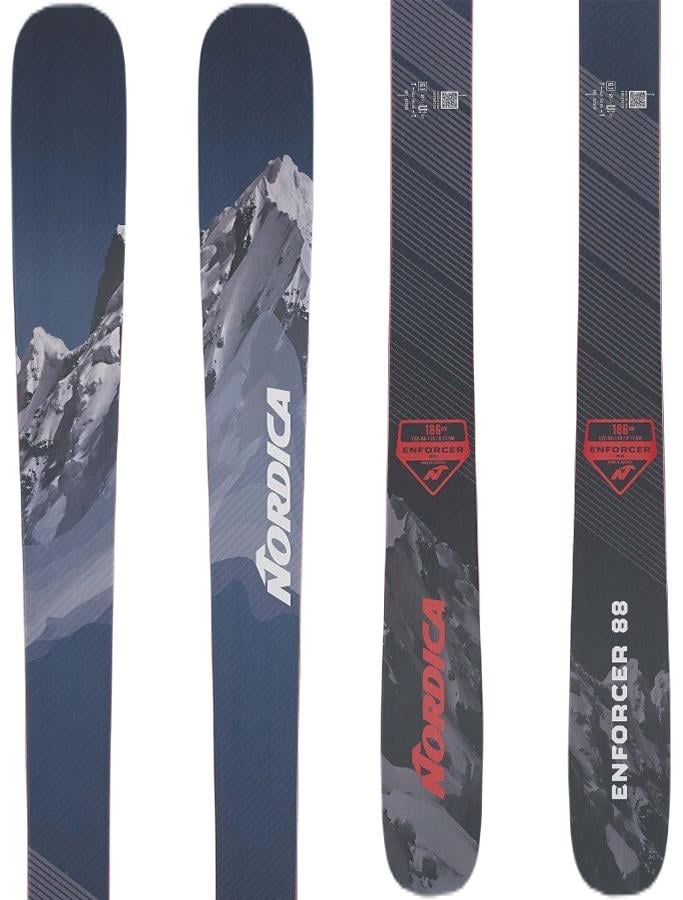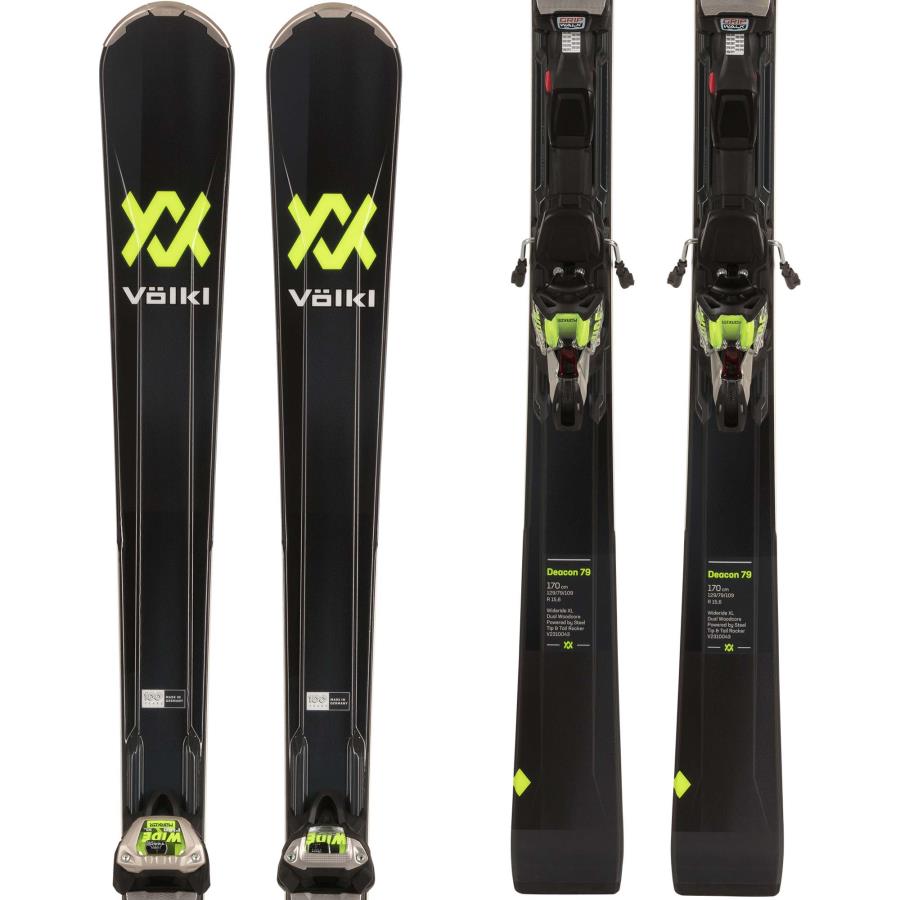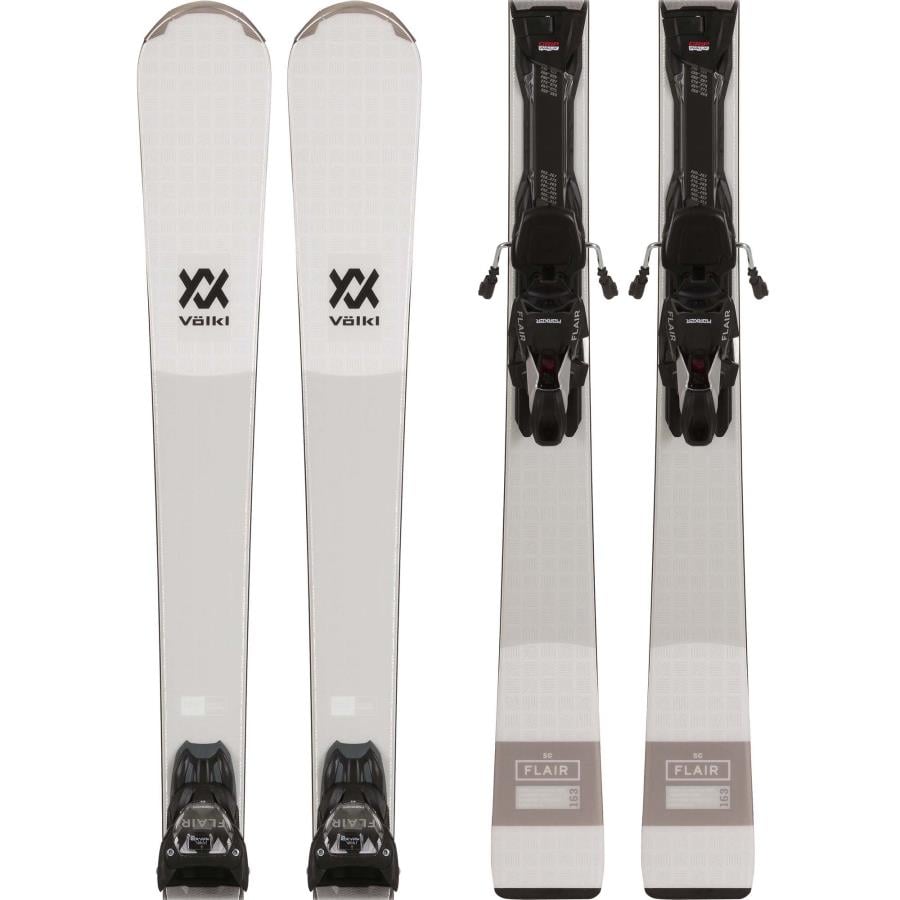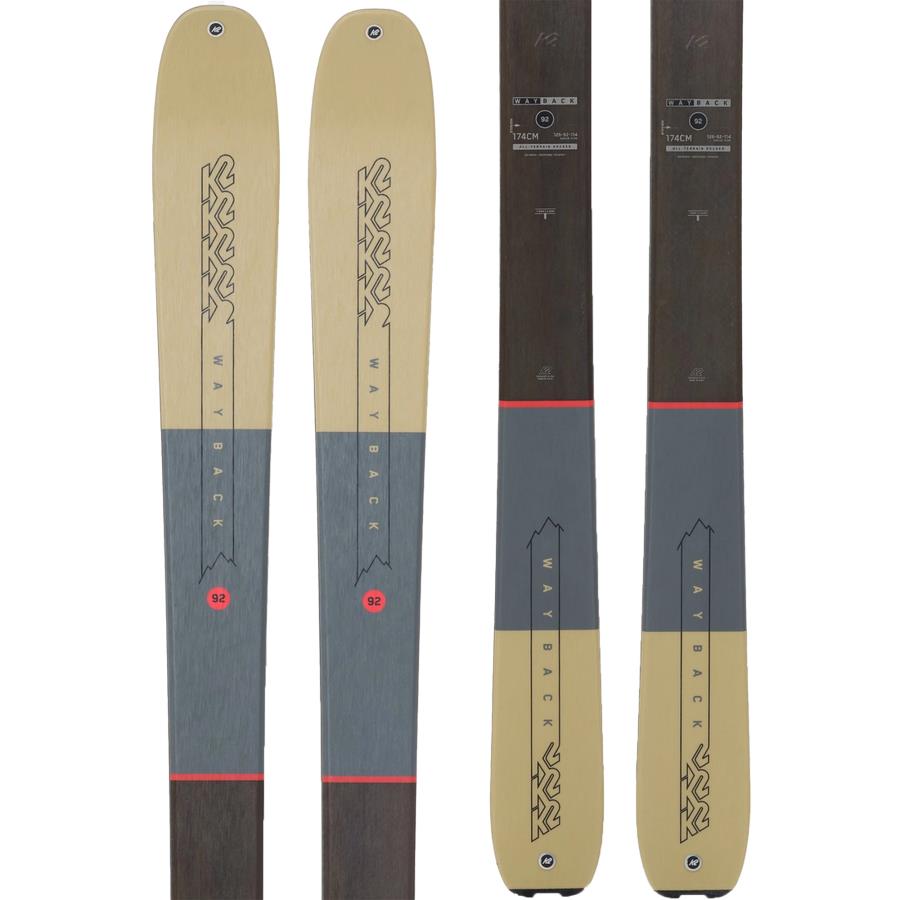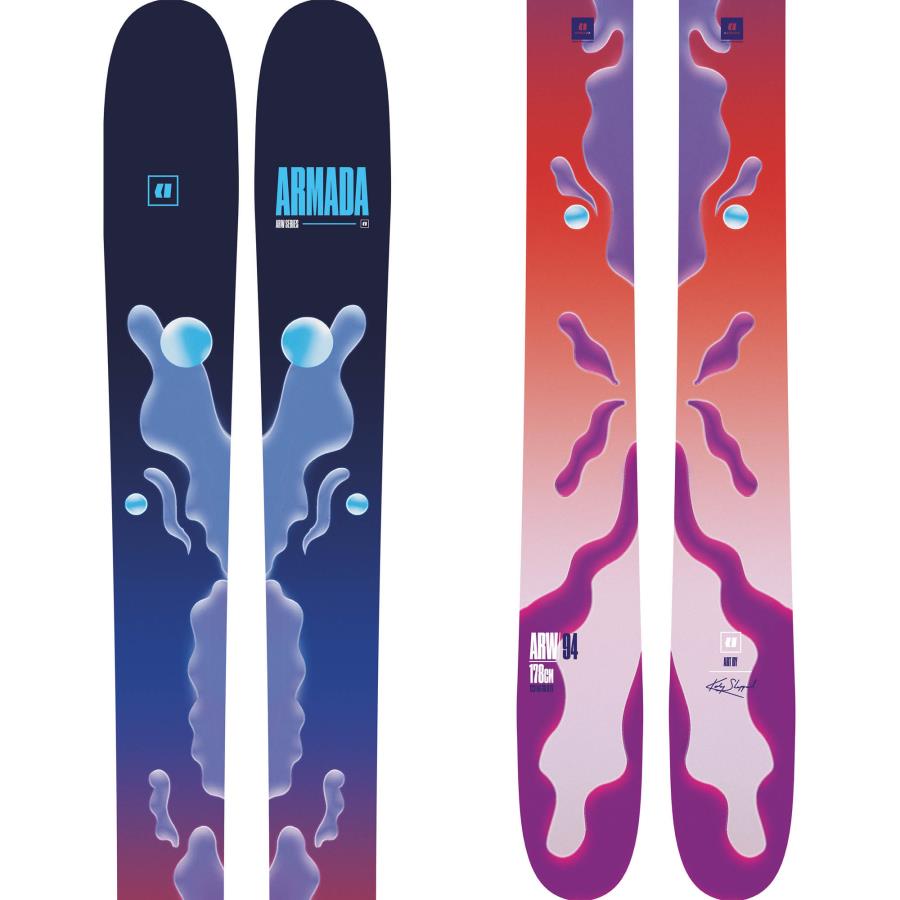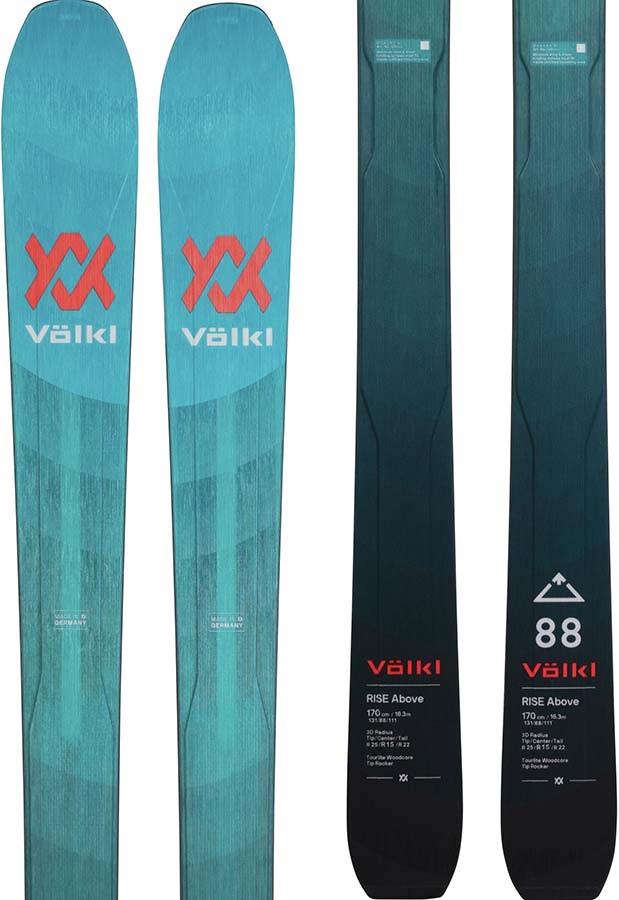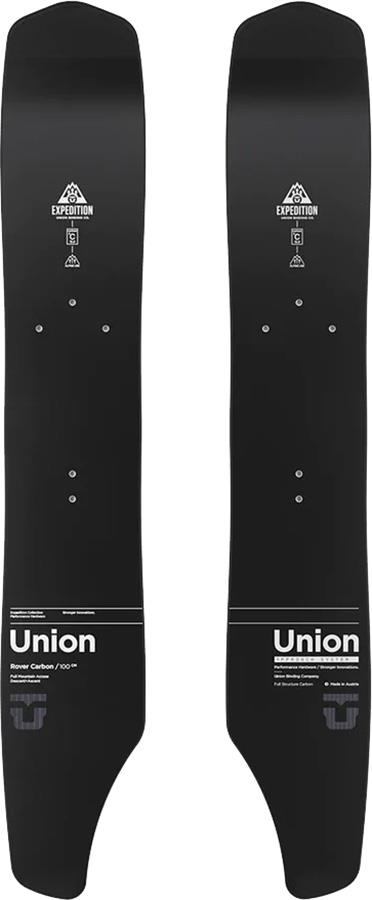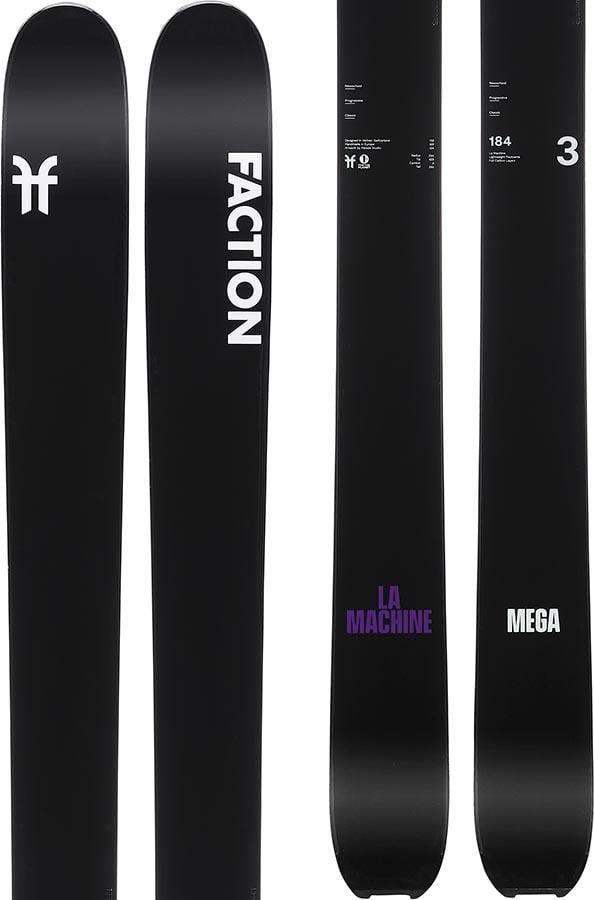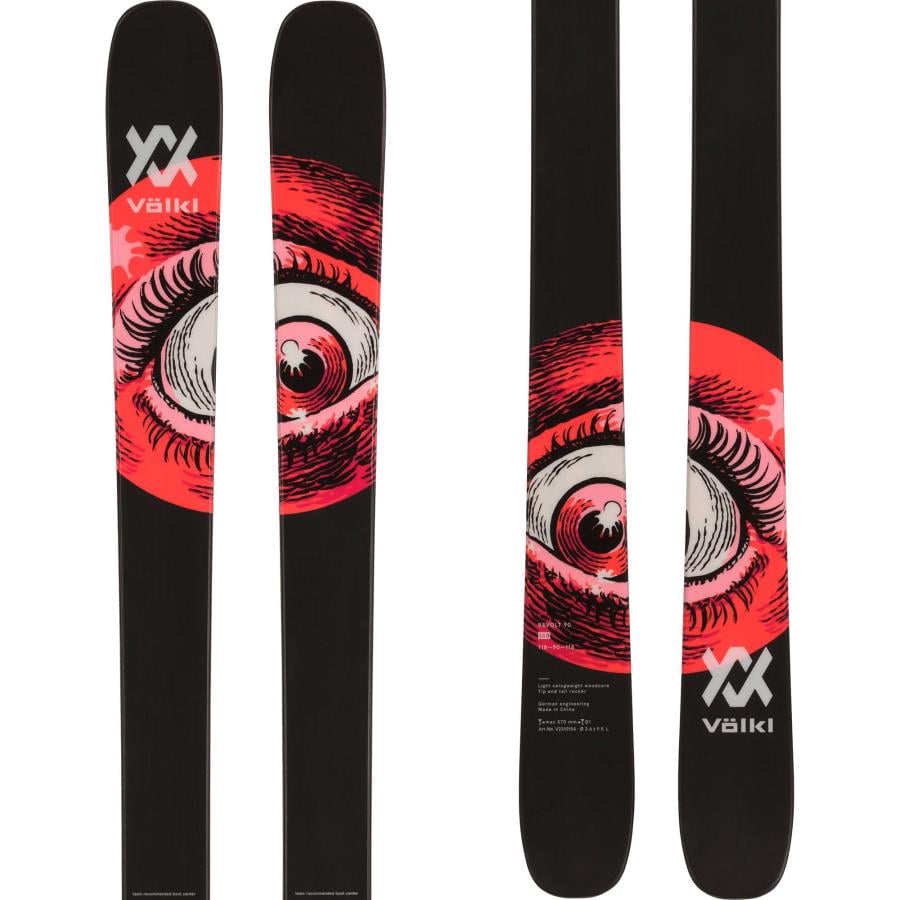The Absolute Guide to Buying Skis
_(1).png)
Finding a good pair of skis that you can have fun on is easy, but there are a few factors which you need to consider before making your final choice on the perfect pair for you.
This advice centre will guide you through the different options which are available to you so that you can maximise your skiing potential.
We've tried and tested a massive range of skis, from the entry level first timers, to the as wide-as-your-head free-ride beasts! Based on our wealth of knowledge and expert opinion, here are some suggestions as to what we think you should be looking for.
When you are ready just check out our range of Skis and narrow your search by using the filters on the top of the page.
Add filters for your weight and length of skis (by using the table below) and you will have a good indication of the skis that will be well sized for you.
The truth is that there is no one perfect size ski for one skier. Factors such as height and weight provide an excellent starting point but there are other things to consider.
Ski category, snow type, terrain and personal preference are just some of the things to take into account.
The general rule is to pick a ski length that is somewhere between your chin and the top of your head. Advanced and expert skiers may choose skis that are slightly longer than head height and beginners may want to go slightly shorter.
Our size chart below is a good general guide to use as a starting point, so check this our first and then apply these simple rules...
Pick skis slightly shorter if you answer 'yes' to any of the following statements:
You are a beginner or improving skier
You are lighter than average for your height
You like to make short, quick turns and rarely ski really fast
You want a pure carving ski with no rocker.
Pick skis slightly longer if you answer 'yes' to any of the following statements:
You like to ski fast and aggressively
You are heavier than average for your height
You plan to do a lot of off piste skiing
You plan to use a twin-tip ski or plan to hit a lot of big kickers
You want a ski that has a lot of rocker
You are an advanced skier
Within your suggested ski size range there are several reasons to choose a shorter or longer ski. A shorter ski will be easier to turn yet not as stable as a longer ski. A carving ski with a skinnier waist width, and a smaller turn radius, can be skied at a shorter length than an all-mountain or freeride ski with a larger turn radius and fatter waist width. Rockered skis are easier to pivot between turns and can be skied slightly longer.
| Weight | Height (cm) | ||||
|---|---|---|---|---|---|
| Kg | <152 | 154-168 | 168-182 | 182-195 | 195+ |
| <49 | 115-130 | 135-150 | 150-160 | 160-165 | 170-175 |
| 50-59 | 125-140 | 145-155 | 155-165 | 165-170 | 175-180 |
| 60-69 | 130-145 | 150-160 | 160-170 | 170-175 | 180-185 |
| 70-79 | 135-150 | 155-165 | 165-175 | 175-180 | 185-190 |
| 80-89 | 140-155 | 160-170 | 170-180 | 180-185 | 190-195 |
| 90-95 | 145-160 | 165-175 | 175-185 | 185-190 | 195-200 |
| 95+ | 160+ | 175+ | 185+ | 190+ | 200+ |
Women's Specific Skis are designed to suit a woman's smaller stature, by utilising softer flex patterns and thinner waist widths.
A ladies centre of gravity is also different to that of a man, meaning you will shift your weight differently when you turn, so these skis are also designed to accommodate this.
Most women could also ski smaller/softer unisex skis, but generally speaking it is a good idea to stick to a gender specific model. Look for skis that are softer and more flexible if you want freestyle style skis, or stiffer and slightly longer if you stick to the piste.
If you're looking to venture off piste, you want something fairly stiff but with a bit more width underfoot for float. The table below should give you a good indication of the size you should be going for (downsize a few centimetres for freestyle or if you're a complete beginner, go up a few centimetres if you want to blast the piste or you're an advanced skier.)
| Weight | Height (cm) | ||
|---|---|---|---|
| Kg� | <152 | 154-168 | 168-182 |
| <49 | 135-137 | 138-152 | 154-166 |
| 50-59 | 137-139 | 140-154 | 157-169 |
| 60-69 | 138-140 | 142-156 | 160-172 |
| 70-79 | 139-141 | 145-158 | 163-175 |
| 80-89 | 140-142 | 148-161 | 165-177 |
| 90-95 | 141-143 | 151-164 | 167-179 |
| 95+ | 144+ | 166+ | 180+ |
This is the measurement at a skis width at the middle (waist) of the ski, which is usually the narrowest point.
Narrower waist widths are quicker edge to edge during turns, while wider waist widths provide better flotation in powder and choppy snow.
You will usually see ski dimensions specified by a 3-number measurement for the tip/waist/tail, like 115/90/107mm. In this example 115mm refers to the tip width, 90mm refers to the waist width, and 107mm refers to the tail width.
We've grouped our skis into waist widths according to where they are best suited on the mountain. It's best to stick to a waist width that is best for the type of skiing you plan to be doing.
However nowadays wider skis are becoming increasingly popular for all mountain and piste skis as technology is improving to allow them to feel and ski like a much narrower ski whilst still having float of a wide ski.
On our Skis page, you can filter by waist widths, but as a general guide:
63-68mm (Race Carver Skis)
67-76mm (Piste Carver Skis)
75-86mm (Piste / All Mountain Skis)
83-96mm (All Mountain Skis)
95-110mm (Wide All Mountain)
109-140mm (Powder / Backcountry Skis )
Camber profile is the curvature of the base a ski from the tip to the tail. Manufacturers are now producing many different camber profiles for different styles of skiing.
If you are into cruising around the pistes or pipe riding we recommend a traditional positive camber snowboard.
For off piste and more hardcore freestyle riding there are now some alternatives to choose from. Every brand does their camber profiles slightly differently, but here is a general overview of what is available to you.
Once you have chosen a camber profile, go back to the skis page and narrow your search again by this category.
Camber is the traditional profile for skis offering skiers lots of edge hold, especially on harder snow.
A cambered ski has a smooth arch underfoot and contact points near the tip and tail when unweighted; when the rider's weight is added with the initiation of a turn, the pressure of their body weight flexes the ski providing a long, evenly pressured running surface and edge.
Furthermore, as you unweight your skis at the tail end of a turn, cambered skis rebound to their natural profile, propelling you into your next turn. Camber skis excel at carving on hard snow; you won't ever see a ski racer on anything other than cambered skis.

Rocker/Camber skis pair a traditional cambered profile underfoot with an elongated, early rise tip borrowed from full rocker ski profiles. This profile places the front contact point further back from the tip, while the rear contact point remains close to the tail.
The rockered tip allows for better flotation and less edge catch for increased float in deep snow, while the cambered rear stores and transmits energy similarly to a fully cambered ski.
Because of its asymmetric shape, this profile does not ski switch as well as other profiles so you don't tend to find this profile on freestyle skis.

Early Rise Tip profiles are rapidly becoming the most popular all mountain camber profile as they provide great all round performance without compromising in one area.
So if you are looking for an all mountain charger that floats in the fluff, but edges on ice, early rise is a great choice.
Different manufacturers may give different names to their Early Rise profiles but all profiles that combine a camber underfoot and rocker in the nose fall under this category.

Early rise tip and tail skis have the playfulness and float of a rockered ski as will as the added edge hold of a cambered ski.
The contact points on skis with this profile are closer towards the middle of the ski than a fully cambered ski, but still not underfoot.
The cambered midsection provides a longer effective edge on hardpack, increasing edge hold and stability, while the rockered tip and tail provide floatation in deeper snow and allow the ski to initiate and release from turns easier.
This profile provides playfulness for park skiers, flotation for powder lovers, forgiveness for beginners and versatility for those who only have one pair of skis. Many ski manufacturers offer multiple types of Rocker/Camber/Rocker to facilitate different skiers, by pairing different amounts of rocker and camber with different ski widths and sidecuts, so there's sure to be one for your needs.

Where you like to ski most of the time is the biggest factor in determining what type and shape of ski you'll want to buy. It also has impact on the length of the ski as we talked about earlier. Here we'll talk about what each type of ski means and you should easily be able to see which category you fit into.
Just as the name states, All Mountain Skis are for skiing the entire mountain. This is by far the most popular type of ski, taking over from piste skis.
They are designed to handle anything you throw at them including powder, ice, groomers, steeps, heavy snow, and everything in between, but they aren't necessarily a master of any one terrain.
If you're only going to own one ski to do it all, this is what you want. That said, all-mountain skis come in a range of shapes and widths to match the specific needs of different skiers, and the conditions.
All-mountain skis generally have what we call mid-fat waists that range from 80-110mm. The key is to figure out where you will be spending the majority of your time on the mountain and what type of terrain you like to ski most.
Remember, its not just about what you ski now but what you aspire to; trust us, today's skis can help you make leaps in ability that will blow you away.
For those that like the classic feeling of laying a ski over on edge and arcing a perfect turn, Piste / Carving Skis are what you want.
These skis have narrower waists and shorter turn radii for edge to edge quickness and responsive turn initiation and exit on groomed runs and hard pack.
The beginner-intermediate skis in this category are designed to make learning how to turn as easy and as you progress through the range they get stiffer, more powerful and more aggressive If you're into charging hard and only really ski on piste, you can't get much better.
Park and Pipe Skis, often called freestyle skis, are for skiers who spend the majority of their time in the terrain park.
If jumps, rails, and jibs of all kinds are your thing then check out this category. Though traditionally park and pipe skis have narrower waists with full camber profiles, this category is incorporating more rocker patterns and different shapes. You will almost always find these skis with twin tips as well as other park specific features like thicker, more durable edges, dense extruded bases, and butter zones.
If you're into big kickers and back country booters you'll want a slightly longer ski, if jibbing is your thing then go shorter.
These skis are for the deep days. If you like to find powder stashes in resort, go on backcountry missions for the freshest of fresh or heli ski trips into the mountains, Powder Skis are what you need to stay afloat. Skis in the powder category are wide and most often have some form of rocker or early rise plus a relatively soft flex.
You will see unique sidecut shapes; the tip and tail are not always the widest parts of the ski. Many powder skis today are versatile enough to handle mixed conditions and harder snow.
Big Mountain Skis are designed for charging big lines with high speeds and big airs. These skis vary in width from wide, powder-oriented skis for skiing Alaska spines to narrower, mixed condition skis for ripping the beat up headwall at your local mountain.
Skis in this category tend to be on the stiffer side, often with more rocker in the tip and less in the tail.
Alpine Touring Skis are as much about the journey up as the journey back down again. Alpine Touring skis incorporate lightweight constructions with cutting edge technology to ensure that they perform as much on the hike up as they do on the ride down.
Alpine Touring skis come in a huge range of sizes and width's designed for different styles of touring, whether you do it for the hike up or the ride down.
The base of a ski comes in 4 different constructions. You may see different grades or names used from each brand, however each one will fall into one of the four categories below.
Extruded
An extruded base is constructed from a single sheet of p-tex plastic and then forced through a mould in the shape of your skis, thus creating a single sheet of plastic which is then glued to the core of your skis. Extruded bases are extremely easy to maintain if you decided to tear yourself a new hole, which is why they are generally found on entry/intermediate level skis and freestyle specific skis.
Extruded Hybrid
Also called Sintruded, Extrintered, Impact, the list goes on! These bases use the same construction as an Extruded base, however the p-tex plastic is generally much higher grade or infused with another chemical to make it harder or more durable.
Sintered
Sintered bases represent the premium end of ski base constructions. Granules of polythene are ground to powder, then heated and compressed onto your core. A sintered base is much more durable, faster and holds wax much more efficiently giving you a faster ride! Unfortunately you do pay more for this type of construction but its well worth it.
Sintered Hybrid
Sintered hybrid bases are the most expensive bases on the market. These bases are manufactured in the exact same way as Sintered bases, however the polythene granules are mixed with carbon or other friction reducing properties to create bases that are lightning fast and super durable.
Explore Our Latest Skis
Check out our full range of Skis today!
Need further advice? We're here to help!
Check out our Ski Buying Guides for technical tips and tricks.
Visit our Help Centre to speak to our experts.
